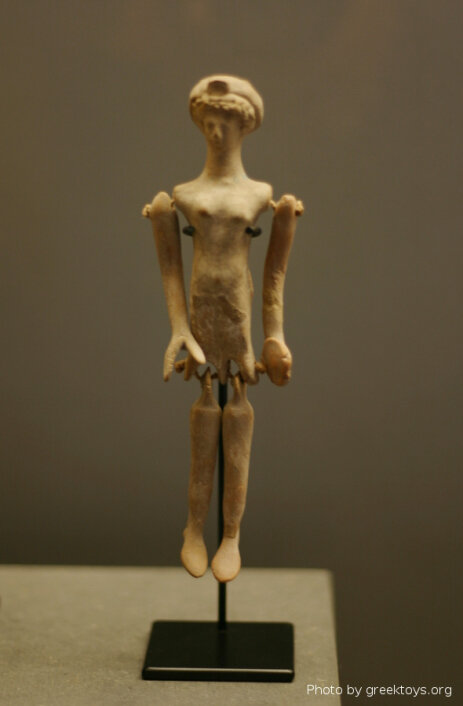Beautiful, with elegant hairstyles, colorful and with magical properties, they fascinated young and old.
The oldest toy in the world evolved from a religious figure and took the form of a doll to play an important role in the development of girls. Crucial to this differentiation was the appearance of the modular doll with movable arms and legs, while the use of a mold helps in mass production so that a girl is not left without her favorite heroine! Jokingly, one could compare the "Plagona" to the Barbie of today.
The "magical world of Plagona"
Plagona was one of the favorite toys of girls in ancient Greece. It was a doll, usually made of clay, with a female figure and elaborate hairstyles. Sometimes the doll's costume was painted, other times the girls made little clothes. Small objects such as tables, cots, pots, etc. completed the girls' magical world. The board was not only for the pleasure of playing, but also had an educational character, like an introduction of the girl to her role and responsibility as a woman in society. The Plagonas were made offerings to the goddess Artemis on the eve of the girl's wedding.
Ancient doll (plangon), hellenistic period, IV-III BC, Brussels, Royal Museums of Art and History
Construction
We have findings of Plagonas since the 7th century BC, and it seems that this game originated from religious figures. The construction of clay dolls with movable limbs played a crucial role in the development of religious figures. Their arms and legs were movable and were threaded together with the main body.
The Plagonas were made in laboratories. Either formed by hand, or the maker created a basic shape on the wheel and then added the details. Around 500 BC, the use of the mold is generalized. The maker first made the mold as a container, then filled it with liquid clay, and after drying, removed the clay that had taken the shape from the container. He then coated the toy with a layer of white and baked it in the oven. In the end, the toy was colored.
Doll, 450-350 BC Brussels, Royal Museums of Art and History
Where can we see them?
Since the Plagona was one of the most common children's toys, the archeological excavation has brought to light a large number of finds. Thus, today we have the opportunity to see boards that adorn the collections of many museums, both in Greece and abroad. Some examples are the Archeological Museum of Athens, the Museum of Cycladic Art, the Louver Museum and the British Museum.























